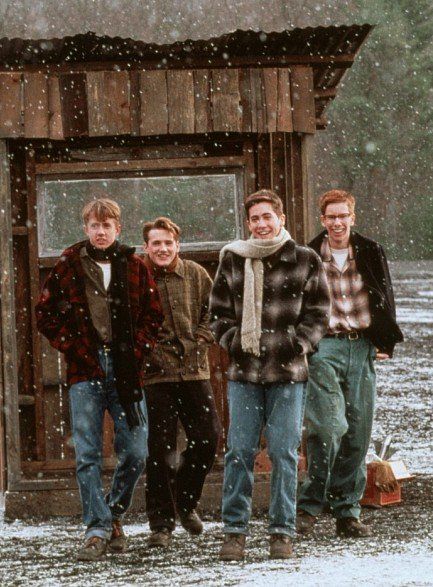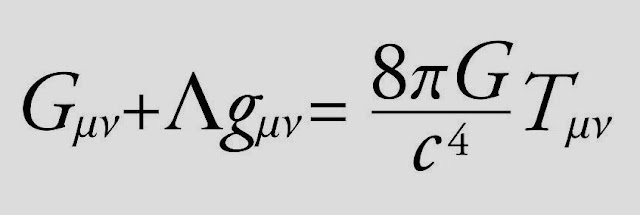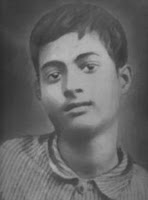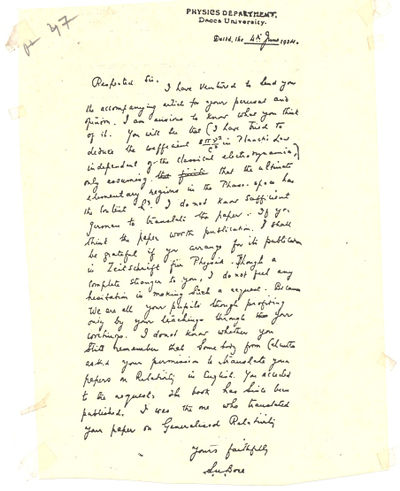
Physics movies often make us wow due to the combined impact of scenery and music, technical detail and philosophical dialogue, futuristic lighting and a multitude of other special effects, that can't be found in run of the mill films. So, take a look at the following spoiler-free list of 20 science movies that everyone should watch in their lifetime.
Primer (IMDb 6.9)
This 2004 film is based on the physics of time. The principles of time travel in the film are inspired by Feynman diagrams in which there is no difference between watching an interaction happen forward or backward in time.
The film is so mind-bending that it makes Back To The Future look like a children's cartoon. It has deep philosophical implications and complex technical terminology in the dialogue which make us want to Google their meanings.

The film was written, directed, produced, edited and scored by Shane Carruth, who also is the protagonist of the story. In real life, he is a mathematics major (no surprises) who has previously worked as software developer before becoming a full-time filmmaker.
The Theory of Everything (IMDb 7.7)
This 2014 movie is less about physics and more about life. It is based on Professor Stephen Hawking who is played almost effortlessly by Eddie Redmayne. The film has multiple themes including science, love, life and religion. It is a beautiful mix of everything; you can watch on Amazon prime.
Hawking (IMDb 7.5)
Compared to The Theory of Everything, this 2004 film is a little less known. However, it has more substance to it than its successor. Starring Benedict Cumberbatch as Professor Stephen Hawking, the movie has more physics in it and less of philosophy.

The film has debates and arguments on the Steady State and the Big Bang theories which were part of Hawking's early years as a PhD student. Benedict received his first nomination for a BAFTA Award for his role in the film.
Infinity (IMDb 6.2)

This movie is based on the autobiography of Richard Feynman in which the Nobel Prize winning physicist has described his early childhood, his work during the second World War and his relationship with the love of his life, Arline Greenbaum. You can watch it on Amazon prime; it was released in 1996 starring Matthew Broderick and Patricia Arquette.
Copenhagen (IMDb 7.4)
This 2002 film is based on the chemistry between two genius physicists, Niels Bohr and Werner Heisenberg. It has actors Daniel Craig and Stephen Rea as Heisenberg and Bohr respectively.

The movie is quite serious as it is set against the backdrop of the second World War. It has a running time of 90 minutes followed by an epilogue by physicist Michio Kaku.
Interstellar (IMDb 8.6)
This 2014 epic science fiction film directed by Christopher Nolan is probably the most scientifically accurate film. It has a star cast of Matthew McConaughey, Anne Hathaway, Jessica Chastain and Matt Damon. Nobel Prize winning theoretical physicist Kip Thorne was the executive producer of the film.
The film has portrayed the correct depiction of the Penrose Process which is a means by which energy can be extracted from a rotating black hole. It was widely praised by eminent scientists such as Michio Kaku, Stephen Hawking and Neil deGrasse Tyson; watch it on Amazon prime.
Coherence (IMDb 7.2)
This is a science fiction thriller movie which is based on the many worlds interpretation of quantum mechanics. It has the idea of multiple realities in a single location. The film was released in 2013 starring Emily Baldoni in the lead role.
Einstein and Eddington (IMDb 7.3)
This is a British drama movie based on the friendship of Albert Einstein and Arthur Eddington and their groundbreaking work on the theory of general relativity.

The film has David Tennant and Andy Serkis as Eddington and Einstein respectively. It is a story about the pursuit of truth against a background of war, violence, nationalism, subterfuge, and prejudice.
Predestination (IMDb 7.5)
This is not just another time travel movie: if you want your mind to be blown, then this is the one to watch. The entirety of the film is full of twists and turns and the ending is absolutely jaw-dropping. It has Ethan Hawke in the lead role.
A Serious Man (IMDb 7)
This 2009 comedy movie is fully based on the concept of Schrödinger's cat. The idea is simple: if you place a cat and something which could kill the cat in a box and sealed it, you would not know if the cat was dead or alive until you opened the box so that until the box was opened, the cat was, in some sense, both "dead and alive".
Contact (IMDb 7.4)
This film is based on the prize winning novel written by Carl Sagan. It is the story of a radio astronomer who has found strong evidence of extraterrestrial life.

It has Jodie Foster and Matthew McConaughey in the lead roles. The film has been described as the most accurate cinematic study of alien life.
2001: A Space Odyssey (IMDb 8.3)
This movie was released way back in 1968 but it is on par with Interstellar due to its stunning ahead of the time special effects for which it even received an Oscar. The main theme of the film was artificial evolution of intelligence: from tool-making ancestors to sentient machines in the future.
This film is the winner of seven academy awards; starring Sandra Bullock and George Clooney. It is the story of astronauts who are stranded in space after mid orbit destruction of their Space Shuttle and attempt to return to Earth. Watch it on Amazon Prime.
Flatland is a romance of many dimensions. It is an animated movie with a voice cast of Martin Sheen, Kristen Bell and Tony Hale. Based on the 1884 novel written by Edwin Abbott; it is a combination of science, maths and philosophy.
Released in 1999 starring Jake Gyllenhaal and Laura Dern, this is a film about a coal miner's son who wants to become a NASA engineer, against his father's wishes. The good thing is that the story is based on real events, which is why, the movie is deeply motivational, especially for young, growing minds.

This is probably the best science fiction comedy of all time. The theme is time travel and its bizarre implications such as the grandfather paradox. The movie was released in 1985, has Michael J. Fox in the lead, and earned a Saturn Award for Best Science Fiction Film. Watch it on Amazon Prime.
It is the story of an astronaut who becomes stranded on Mars after his team members assume him dead. He must rely on his ingenuity to find a way to signal to Earth that he is alive. Starring Matt Damon and Jessica Chastain, this is one of the most scientifically accurate films.
This is a movie on the life of Marie Curie who is remembered for her discovery of radium and polonium and her contributions to finding treatment for cancer. The film is set amidst the backdrop of world war starring Kate Trotter as Marie Curie.
This 100 minute film is a story of the large hadron collider at CERN and its discovery of the Higgs Boson particle in 2012. Particle fever is so well made that you don't have to be a physics student to enjoy it.
This film was released in 1995 starring Tom Hanks as Apollo 13 Commander Jim Lovell. Based on a true story; nominated for nine academy awards; most technically accurate film because it was executed by NASA engineers and actors took a crash course in physics.
Gravity (IMDb 7.7)
Flatland: The Movie (IMDb 6.9)
Flatland is a romance of many dimensions. It is an animated movie with a voice cast of Martin Sheen, Kristen Bell and Tony Hale. Based on the 1884 novel written by Edwin Abbott; it is a combination of science, maths and philosophy.
October Sky (IMDb 7.8)

Back To The Future (IMDb 8.5)
The Martian (IMDb 8)
Marie Curie: More Than Meets The Eye (IMDb 7.5)
Particle Fever (IMDb 7.4)
This 100 minute film is a story of the large hadron collider at CERN and its discovery of the Higgs Boson particle in 2012. Particle fever is so well made that you don't have to be a physics student to enjoy it.
Apollo 13 (IMDb 7.6)
This film was released in 1995 starring Tom Hanks as Apollo 13 Commander Jim Lovell. Based on a true story; nominated for nine academy awards; most technically accurate film because it was executed by NASA engineers and actors took a crash course in physics.
















































 Physics, astronomy and science history blog for students
Physics, astronomy and science history blog for students